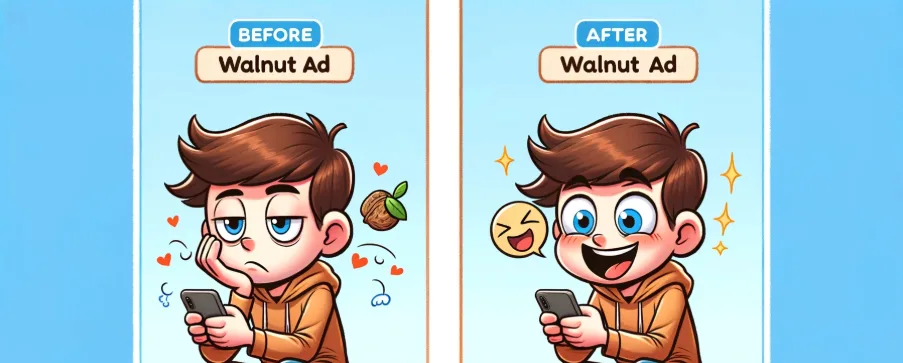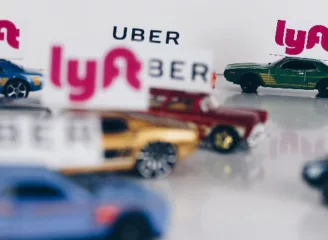You are facing the challenge of hacking your brand’s ads for LinkedIn. What steps will you follow knowing that marketing messages overload users all day and you must stand out? I faced it before and tried to find some LinkedIn ad examples of other companies, but nothing resonated, I went to the best practices, which give a very straightforward technical aspect checklist. I thought I had an excellent idea for an ad and pushed things forward, launching it, and the results were, in the best case, more of the same. There may be something to apply, but what needs to make it actually work? I figured out after starting at Walnut.io that my initial approach was all wrong.
The examples below are an outcome of a team spirit effort, in which we realized that each company has its character, style, voice & tone, which have to be applied. So we applied ours. It started with the “Stop the scroll!” concept (Which Manu invented) and progressed to become a culture. Here is the story behind it.
From Marketing Vice President to Making Real Results.
Walnut is exceptionally dedicated to its advertising creativity, especially for its social ads, and grants a great discussion on social channels thanks to it. You can look at the comments on their ads (even the promoted ads get them) and filter posts about Walnut’s ads on Linkedin to understand their uniqueness. Also, Jim Habig, LinkedIn’s vice president of marketing, mentioned them on stage.
And most impressive is that they deliver results. Their CTR is far above the SaaS industry benchmark, 2023 (0.33%), and they drive leads from landing pages.

Walnut’s LinkedIn Ads Practice
As mentioned earlier, we don’t rely on conventional best practices; instead, we’ve developed our own approach tailored to meet our marketing objectives. Feel free to draw inspiration from our methods to craft a strategy that suits your marketing efforts. Now, without further delay, let’s dive in.
A single-image LinkedIn ad has three critical sections: the introduction text, the image, and the headline. Using them wisely helps guide users smoothly, from grabbing their attention to clicking on the ad and going to the landing page.
The fascinating part of it is that the user’s attention doesn’t move from top to bottom as expected (Company name & Logo > Introduction text > Image > Headline > CTA); our brain responds first to the simple visuals.
Start by stopping their scroll.
Look at this ad. What’s the first thing that catches your eye?
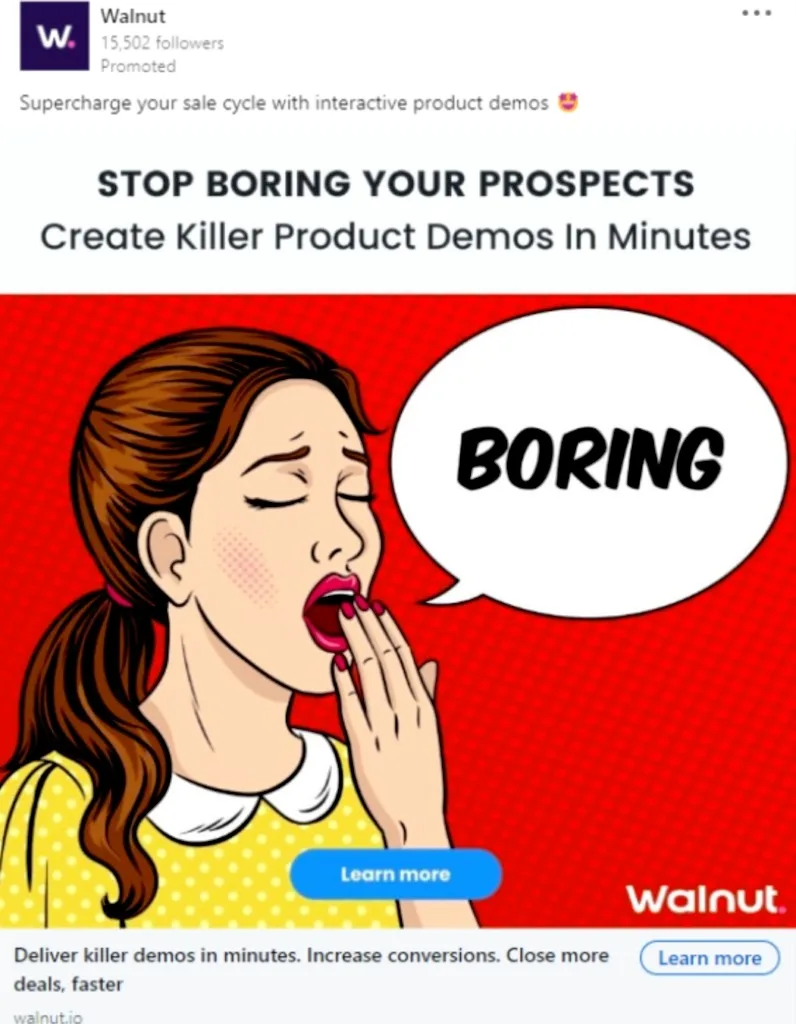
If you’re like most people we’ve spoken to in our office, the first thing that catches your eye is likely the image. This makes sense because the human brain finds images easier to process than text. That’s why we’ve dubbed the image section ‘Stop the Scroll!’ The right image can capture users’ attention, even if just for a split second, making them pause and seek out other engaging elements. In our case, this includes the word ‘BORING’ inside a speech bubble, which further intrigues the viewer and keeps their thumb from scrolling past. Incorporating text directly into the image as part of the design is another effective strategy. It creates a link between the initial ‘teaser’ and the subsequent ‘solution,’ compelling the user to delve deeper.
Show them what they’re missing out on or could gain!
After we grab the users’ attention, it’s time to give them a reason to stay longer. Segment and adjust the message to your target audience (see example below) in the introduction text (above the image) and the headline (below the image). Two sections that act differently and still complete each other.
Introduction text: It’s more of an explanatory section. Give them an idea of the offer, to whom it aims (“sales leaders”), and what it can deliver to them (“Impress the prospect with interactive demos”).
Headline text: This section should drive the user to click a nudge for the CTA. Teas the benefit of using your product (Save time, Close more deals). You can also use this approach with an actionable sentence (we also used a version with “Easily deliver customized demo your prospect will love!”).
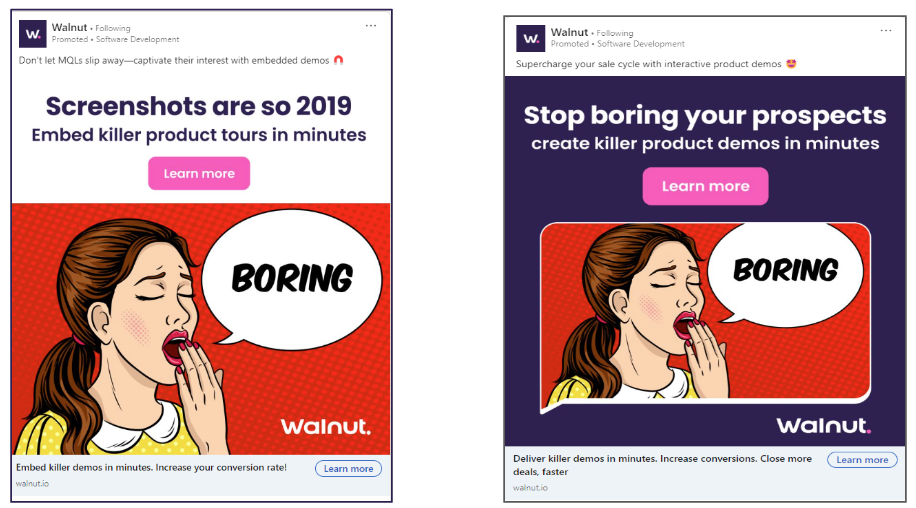
Make it part of team culture.
Walnut’s most iconic ad features a before-and-after comparison of a cat and a lion, tapping into various psychological elements that resonate with viewers. This ad has become a benchmark in the industry, often imitated by other companies, which was both flattering and frustrating for us. Despite its popularity, it wasn’t always our top performer in terms of results. Over time, our team grew weary of relying on this concept and became determined to surpass it, especially to prove to Manu that we were capable of even greater creativity.
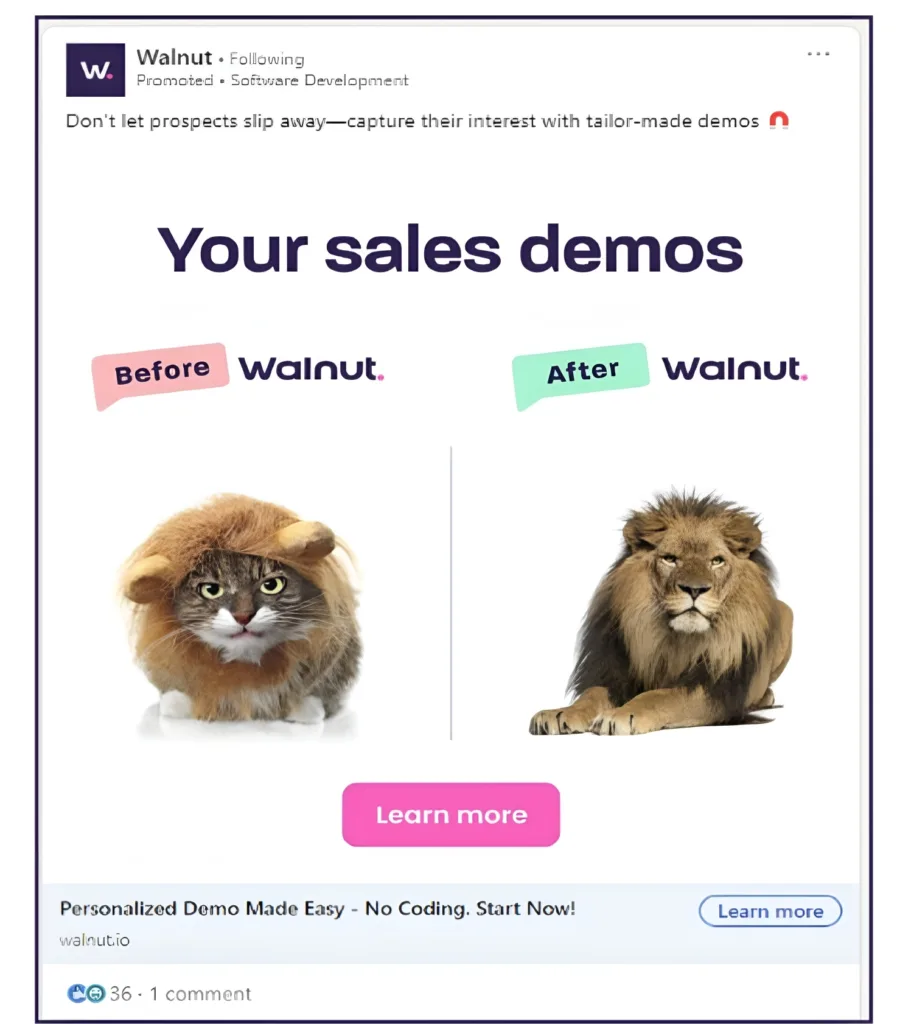
So, we rolled up our sleeves, engaged in brainstorming sessions, had debates, organized competitions, and launched several new campaigns. While none quite matched the results of the iconic ‘Cat-vs-Lion’ or ‘Bored Lady’ ads, the process was enjoyable, and we continually experimented with fresh ideas until something new clicked. More importantly, this initiative became ingrained in our team’s culture. Suddenly, bringing a new ad idea to life was just a matter of hours, with results promptly shared, analyzed, and discussed in our weekly meetings.
Monitoring, testing, and reflecting.
Transparency in sharing results is a critical part of our process; without it, the significance of our prior efforts could be lost. This practice ensures that team members are continuously involved, receiving feedback on their contributions to understand what strategies are more or less effective. It also keeps them informed about the costs and overall impact of their efforts.
Moreover, this approach allows us to stay attuned to our audience, helping to prevent ad fatigue and gain a deeper understanding of what truly resonates with our prospects. We remained active even after discovering a successful formula for Walnut. Instead, it provided us with a benchmark against which we could measure new ideas, ensuring they align with Walnut’s unique voice and tone. This method led to the creation of innovative ads, like those featuring a squirrel or using only text on an image. Some of these new concepts met our benchmark and became part of our advertising repertoire.
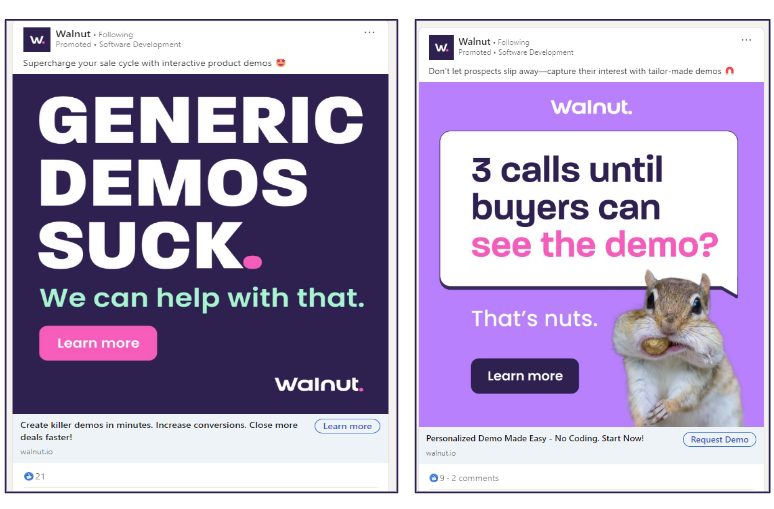
What have we learned?
Initially, we wanted to create a social ads A/B testing process to find an ad that outperforms the leading one, which will be used as a foundation for creating the following ad to win the previous version. However, as we progressed, we realized there were no easy solutions or quick victories in the quest for the perfect ad. Despite this, we identified three key insights that clarified how to establish our objective.
- The real power lies in combining different elements. Analyzing each part of an ad separately (the intro text, headline, and image) is too complicated and doesn’t present significant results. No single picture or text always works the best. Instead, we found success by putting together different combinations of ads that worked well for Walnut. This approach helps us set up a clear path for testing ads in the future.
- Question the norm while staying true to your brand’s identity. Even if you believe you’ve created the best ad possible, consider experimenting with alternatives that could challenge it, such as using only text in the image section. Maintain consistency with your brand’s language and style throughout this process. By persistently doing so, you’ll refine your offerings and perspective. Reflecting, you’ll see how your brand awareness campaigns have evolved and matured over time.
- Social ad testing isn’t about surpassing the old favorites; it’s about combating ad fatigue and striving to achieve the same success that the best-performing ads once had at their peak. The process has to maintain your ad impact, but importantly, setting a new standard. Improvement doesn’t happen in a straight line; it’s an iterative process of trial and error.
Maintaining this lively ad experiment culture hinges primarily on fostering a great team spirit characterized by mutual respect and healthy challenges. It’s not merely about adopting a mindset but also about infusing enjoyment and fun into the process. Fortunately, I’ve witnessed this firsthand, and I firmly believe that such harmonious collaboration among skilled, well-intentioned individuals can lead to remarkable outcomes.
 Linkedin
Linkedin
 Facebook
Facebook
